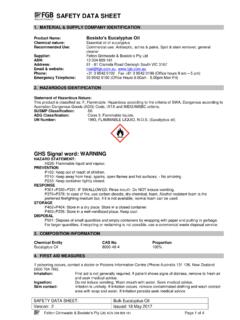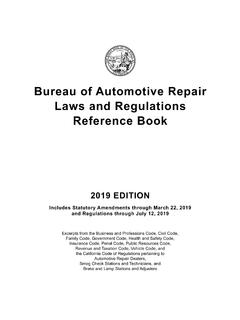Transcription of Jolly Phonics Teacher’s Book
1 Sue Lloyd and Sara WernhamTo see the full range of Jolly Phonics products, visit our website at House, High Road, Chigwell, Essex, IG7 6DL, UK Tel: +44 20 8501 0405 Fax: +44 20 8500 169682 Winter Sport Lane, Williston, VT 05495, USA Tel: +1-800-488-2665 Fax: +1-802-864-7626 Printed in the Malta. All rights Sue Lloyd and Sara Wernham 2010 (text)BookTeacher sJolly Phonics Teacher s Book Sue Lloyd and Sara WernhamJolly Phonics Teacher s Bookis an essential guide to usingPupil Books 1, 2 and 3 in the classroomJolly Phonics is a multisensory programme that teaches young children the skills they need to read and write fluently in their first year of school.
2 This book is a comprehensive resource for teachers who want to teach the programme alongside the Jolly Phonics Pupil Books. It offers a set of structured lesson plans that give step-by-step guidance on all aspects of the lesson, including the pupil book activities. It also provides an in-depth introduction to Jolly Phonics and a summary of key points to help teachers get Book 1 Daily lessons introduce the 42 main letter sounds of English. Regular activities practise the five key skills for reading and writing. Structured segmenting activities progress from identifying initial sounds to hearing all the sounds in a Books 2 and 3 Weekly units cover key topics such as Alternatives, Handwriting, Tricky Words and Words and Sentences.
3 Regular lessons introduce and revise the main alternative vowel spellings, capital letters, alphabet and new tricky words. Pupil Book 3 introduces ph , soft c , soft g and the /air/ spellings. Guided writing and reading comprehension activities introduce basic sentence structure and reading for material in the Jolly Phonics Teacher s Book and Pupil Books is recommended by Cambridge Assessment International Education to support the Cambridge Primary English curriculum : JL7250 ISBN 978-1-84414-725-0 xHSLIOEy147250zTeacher 2-416/07/2020 18:27 When reading, children need to understand the meaning of the words.
4 Before they can do this, they have to be able to work out what the words say. ln order to do so, the children look at the letters, say the sounds, run them together and listen for the word. This process is a key phonic skill called blending. Blending is sometimes referred to as synthesising, which is why Jolly Phonics is known as a synthetic Phonics programme. With the ability to blend, children are able to read unknown regular words. They are also in a far better position to attempt more challenging words that are not completely decodable at this stage. In the beginning, most children are not able to blend and need to be taught how.
5 The teaching of aural blending can begin on the children s first day of school, using their Pupil Books. The children are shown the picture of the sun on their lesson page and asked if they can see a /s-u-n/. Only a few children in the class will hear the word after it has been split into its individual sounds. After a few more examples, using the pictures on the page /s-p-ie-d-er/, /s-n-ai-l/ and /t-r-ee/ one or two more children might be tuned in to hear the words. The following day, after teaching the next letter sound, a few examples from the /a/ page could be called out, such as /a-n-t/ and /a-rr-ow/.
6 Any object on the page could be used, although short words are preferable. Each day, a few more children will be able to hear the words. Some children have a natural ability for blending, but success comes to all in the end. Once children can hear the word when an adult says the letter sounds, they are ready to say the sounds for themselves and try listening for the word. Blending needs practice and should be started as soon as possible. On most days, teachers should try to write short regular words, such as tap, pan, pit, sit and pin, on the board or on flashcards, making sure that the words use only those sounds that have been taught.
7 The children then say the sounds and listen for the word. The daily Word Bank in the Teacher s Book is useful for this activity. In addition, there are words to blend each day on the lesson pages in Pupil Book 1 (except for /s/ and /a/, which show only the sounds). Children should not use any actions when blending words. The children who can hear the words understand how the alphabetic code works for reading. They realise that it is something they can work out for themselves. This knowledge fascinates them and their confidence grows. For most children, blending is relatively easy. However, some children find it difficult and need to be taught exactly what to do.
8 There are two main reasons for children not being able to hear the word when they have said the sounds: 1. They do not know the letter sounds well enough As soon as the child sees a letter, the sound should come automatically to them. If they have to pause to think, they lose track of the word. To correct this, it is necessary to revise the sounds regularly with flashcards, actions and other letter-sound activities. 2. The letter sounds are wrongly emphasised The emphasis should be on the first letter sound, for example, on the /d/ of /d-o-g/. If the children put the emphasis on the last letter sound, they may try to start the word with that sound and fail to hear the word.
9 3. Blending 1628/07/2020 15:00 There are two types of sound in English. One type makes a pure, continuous sound: examples include /ssssss/, /ffffff/, /rrrrrr/, /mmmm/, /nnnnnn/ and /vvvvvv/. The other type has a schwa on the end. The schwa, which sounds like /uh/, is an unstressed vowel sound, and it can be heard on the end of many letter sounds. For example, /b/ cannot be said without a schwa: /buh/. All sounds should be said with as little schwa as possible. In blending, the first sound needs to be louder than the others. This helps the children to remember how the word starts. The sounds that follow in the word need to be spoken softly and quickly, and the schwa should be avoided where possible.
10 This technique has been found to be effective and about three quarters of the children master it quite quickly. Although blending is more difficult for the other children, all they need is more practice. Frequently, in a whole-class situation, the children who are good at blending call out the answer quickly and the less able copy them, as they do with letter sounds on flashcards. To remedy this situation, teachers can provide an extra blending session for the weaker children. Initial consonant blendsBlending skills can be improved if the children practise saying the initial consonant blends.






